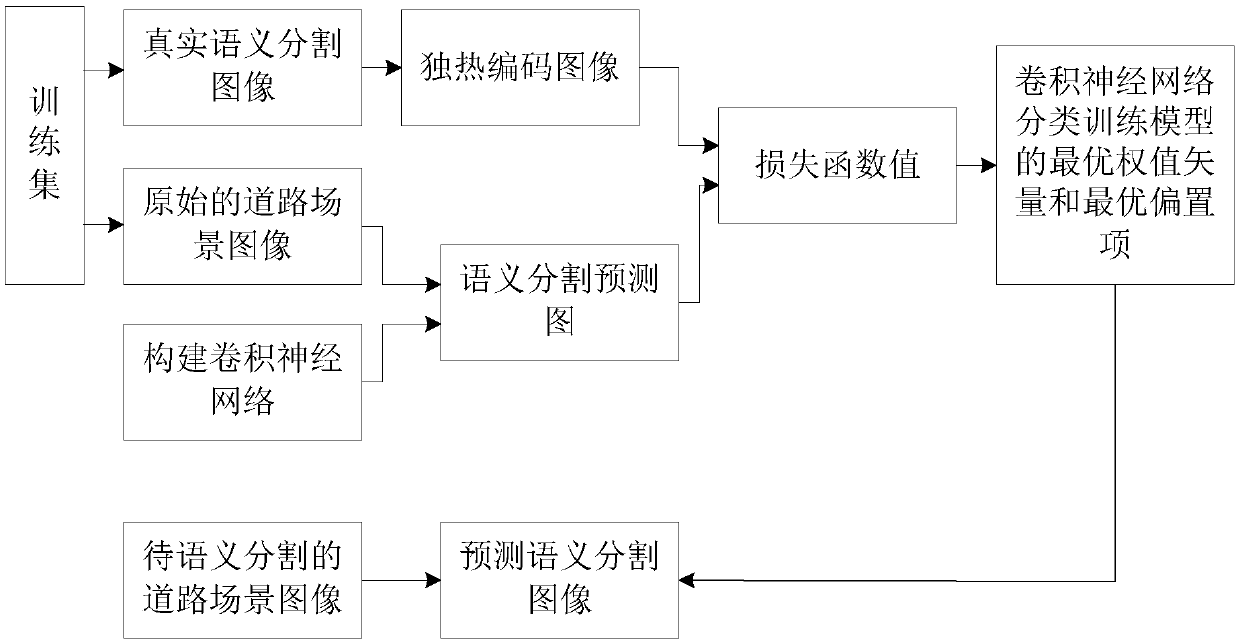Road scene segmentation method based on residual network and expanded convolution
A scene segmentation and road technology, applied in character and pattern recognition, instruments, computer parts, etc., can solve problems that affect the accuracy of segmentation, cannot retrieve information, and do not control information loss well
- Summary
- Abstract
- Description
- Claims
- Application Information
AI Technical Summary
Problems solved by technology
Method used
Image
Examples
Embodiment Construction
[0041] The present invention will be further described in detail below in conjunction with the accompanying drawings and embodiments.
[0042] A road scene segmentation method based on residual network and dilated convolution proposed by the present invention, its overall realization block diagram is as follows figure 1 As shown, it includes two processes of training phase and testing phase.
[0043] The specific steps of the described training phase process are:
[0044] Step 1_1: Select Q original road scene images and the real semantic segmentation images corresponding to each original road scene image, and form a training set, and record the qth original road scene image in the training set as {I q (i,j)}, combine the training set with {I q (i, j)} corresponding to the real semantic segmentation image is denoted as Then, the existing one-hot encoding technology (one-hot) is used to process the real semantic segmentation images corresponding to each original road scene ...
PUM
 Login to View More
Login to View More Abstract
Description
Claims
Application Information
 Login to View More
Login to View More - R&D
- Intellectual Property
- Life Sciences
- Materials
- Tech Scout
- Unparalleled Data Quality
- Higher Quality Content
- 60% Fewer Hallucinations
Browse by: Latest US Patents, China's latest patents, Technical Efficacy Thesaurus, Application Domain, Technology Topic, Popular Technical Reports.
© 2025 PatSnap. All rights reserved.Legal|Privacy policy|Modern Slavery Act Transparency Statement|Sitemap|About US| Contact US: help@patsnap.com



